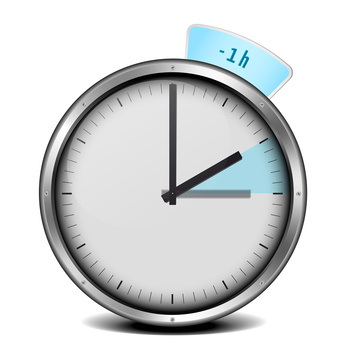Daylight Savings Time (DST) officially ends Sunday, November 4 at 2:00 am. This means that clocks in most states in the continental United States must “fall back” by one hour. The state which does not observe is Arizona. Outside of the continental U. S., Hawaii, does not observe DST.
 The concept of DST is really a ritual of setting clocks forward one hour in the spring so that during the warmer months there is less daylight in the morning and more daylight in the evening. This act is known as “springing forward”. In the fall, the reverse occurs; that is, clocks “fall back” by one hour.
The concept of DST is really a ritual of setting clocks forward one hour in the spring so that during the warmer months there is less daylight in the morning and more daylight in the evening. This act is known as “springing forward”. In the fall, the reverse occurs; that is, clocks “fall back” by one hour.
DST actually is a federal law. The Energy Policy Act of 2005 was the last legislative act to become law. This Act was just one of many federal legislative efforts to deal with the concept of national time. During World War I, the U. S. Congress passed the Standard Time Act of 1918. Interestingly, when War World I ended, the Act was abolished. During World War II, President Roosevelt created “war time” which ended in 1945 at the close of the war. Following the close of the war, there was a lack of any federal time regulation for about 20 years. Then in 1966, the Uniform Time Act was passed by the U. S. Congress at the urging of the transportation industry. In 1986, another act, called the Uniform Time Act was passed after input from the National Bureau of Standards which studied the effect of a year long law (in 1974-1975) which mandated national observance of DST.
The Energy Policy Act of 2005 listed the exact date and hour for the start and end of DST though the year 2025.
There are health implications to changing time. When people “fall back” or “spring forward”, a health issue that can occur, according to a study conducted by the the National Institutes of Health, is insomnia. [http://tinyurl.com/aofj5kg] This is involved in a shift in circadian rhythms. Although not well understood, such a shift may also be implemented with an increase in heart attacks when springing forward and a decrease in heart attacks when falling back.
 Indiana Social Security Disability Attorney Blog
Indiana Social Security Disability Attorney Blog









